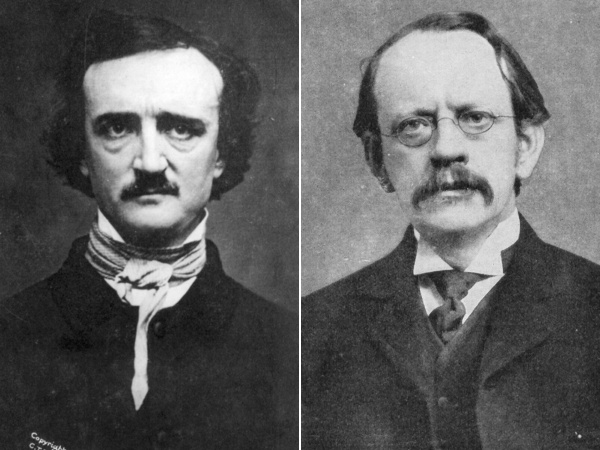
Bohr Model of the Atom
January 3, 2012 My introduction to atomic physics was as a child watching the many science-oriented editions of Walt Disney Presents on Sunday nights on a monochrome (a.k.a., black-and-white) television receiver. The atomic model, presented as an animation, was the Bohr model in which the electrons travel in orbits around the nucleus. The Bohr model was readily understandable to those of us who had learned enough astronomy to know that the planets orbit the Sun. At the time it was presented, it was also quite reasonable to physicists, who just needed to replace gravitational force with electrostatic force in the same model. Both forces followed an inverse-square law, so what could be simpler? | The Bohr atom, as depicted in the 1946-1974 logo of the United States Atomic Energy Commission. (Via Wikimedia Commons). |
• The cubic atom, proposed by Gilbert N. Lewis in 1902 to explain valence and bonding. I wrote about Lewis in a previous article (Gilbert N. Lewis, November 16, 2011.
• The plum-pudding model, proposed by J.J. Thompson, who had discovered the electron, in 1904. This model had electrons embedded in a positively-charged liquid. This model was proposed before the discovery of a point-like nucleus. The electrons were allowed to orbit internally in this liquid. Thompson was awarded the Nobel Prize in Physics in 1906, primarily because of his discovery of the electron.
• The Saturnian model, proposed in 1904 by the Japanese physicist, Hantaro Nagaoka. As its name implies, the electrons move in orbits very close to the nucleus, very much like Saturn's rings. The atomic stability derives from this close orbit that dominates the electrostatic forces, just as Saturn's gravitational field stabilizes its rings.
• The Rutherford model, proposed by Ernest Rutherford in 1911. Based on his scattering experiments of alpha particles striking gold foils that showed the existence of a compact nucleus, Rutherford proposed a planetary model of the atom. Rutherford didn't attempt to reconcile this model with physical features of atoms, such as their spectra. This was left to Bohr, whose planetary model made this connection.
 Separated at Birth? Edgar Allan Poe (left) and J.J. Thompson (right). Image sources for Poe and Thompson via Wikimedia Commons.
As any undergraduate physics student knows (or, should know), the planetary models have a fundamental problem; that is, an accelerating charge will radiate energy. Electrons in orbit about a nucleus will lose energy and spiral into the nucleus. This calculation was actually a back-of-the-chapter homework problem in Resnick and Halliday that I needed to solve as an undergraduate.
This radiation is readily calculated from the Larmor's equation.
Separated at Birth? Edgar Allan Poe (left) and J.J. Thompson (right). Image sources for Poe and Thompson via Wikimedia Commons.
As any undergraduate physics student knows (or, should know), the planetary models have a fundamental problem; that is, an accelerating charge will radiate energy. Electrons in orbit about a nucleus will lose energy and spiral into the nucleus. This calculation was actually a back-of-the-chapter homework problem in Resnick and Halliday that I needed to solve as an undergraduate.
This radiation is readily calculated from the Larmor's equation.
P = e2a2 / 6 π εo c3in which P is the radiated power, e is the charge, a is the acceleration, εo is the permittivity of free space, and c is the speed of light. The acceleration in this case is the centripetal acceleration,
a = v2 / rin which v is the electron velocity, and r is the radius of its orbit. Eventually, quantum mechanics cleared this problem by making the electron fuzzy, which is about as confusing as things can get. Fortunately, it all worked out for the best, and we have all our electronic gadgets as proof.
 Frontpiece of H. A. Kramers and H. Holst, 'The Atom and the Bohr Theory of its Structure,' (Gyldendal, London), 1923. (Fig. 2 of ref. 1, via arXiv Preprint Server). This book helped to popularize Bohr's atomic model.[1]
Frontpiece of H. A. Kramers and H. Holst, 'The Atom and the Bohr Theory of its Structure,' (Gyldendal, London), 1923. (Fig. 2 of ref. 1, via arXiv Preprint Server). This book helped to popularize Bohr's atomic model.[1]